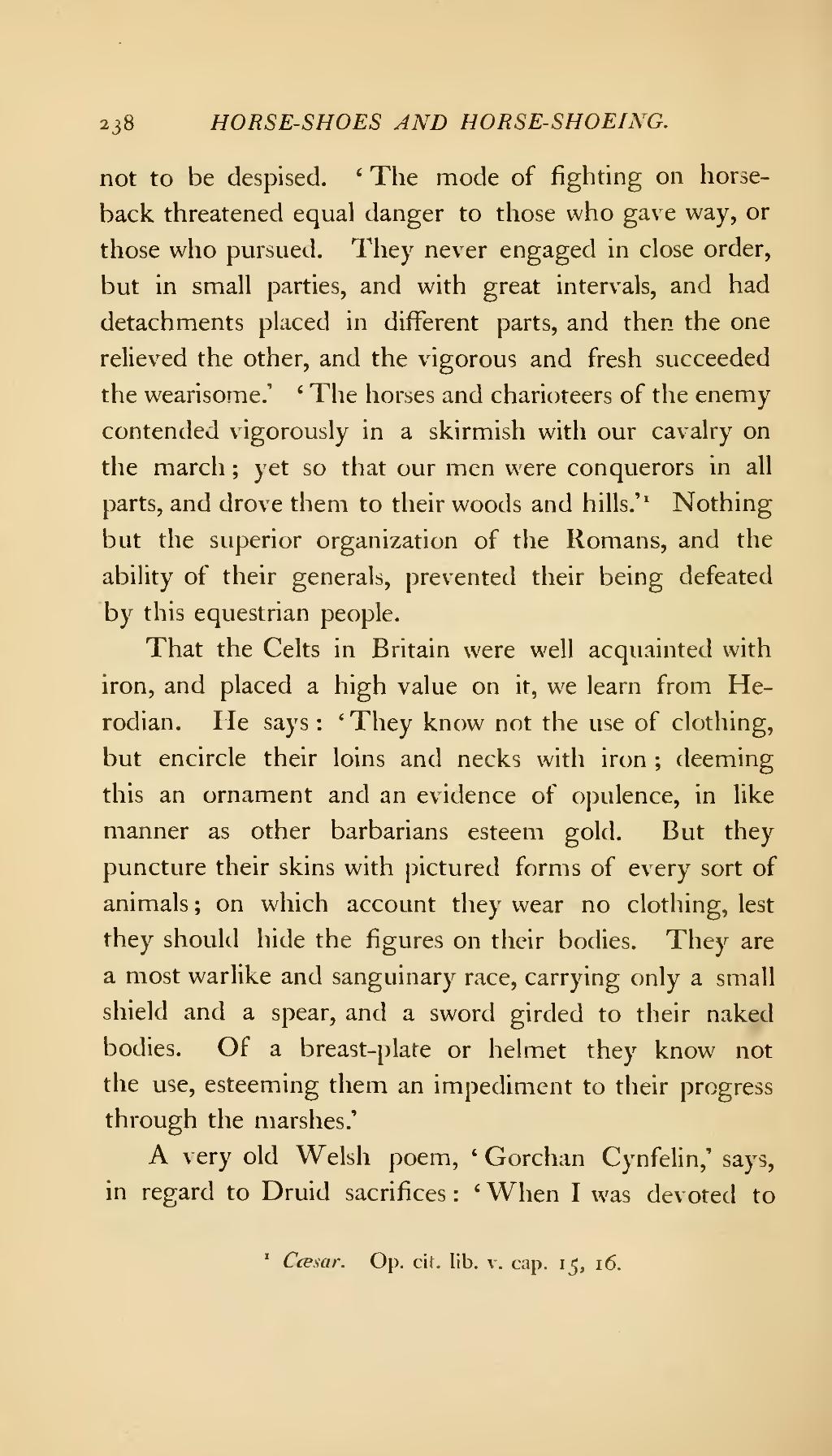not to be despised. ‘The mode of fighting on horseback threatened equal danger to those who gave way, or those who pursued. They never engaged in close order, but in small parties, and with great intervals, and had detachments placed in different parts, and then the one relieved the other, and the vigorous and fresh succeeded the wearisome.’ ‘The horses and charioteers of the enemy contended vigorously in a skirmish with our cavalry on the march; yet so that our men were conquerors in all parts, and drove them to their woods and hills.’[1] Nothing but the superior organization of the Romans, and the ability of their generals, prevented their being defeated by this equestrian people.
That the Celts in Britain were well acquainted with iron, and placed a high value on it, we learn from Herodian. He says: ‘They know not the use of clothing, but encircle their loins and necks with iron; deeming this an ornament and an evidence of opulence, in like manner as other barbarians esteem gold. But they puncture their skins with pictured forms of every sort of animals; on which account they wear no clothing, lest they should hide the figures on their bodies. They are a most warlike and sanguinary race, carrying only a small shield and a spear, and a sword girded to their naked bodies. Of a breast-plate or helmet they know not the use, esteeming them an impediment to their progress through the marshes.’
A very old Welsh poem, ‘Gorchan Cynfelin,’ says, in regard to Druid sacrifices: ‘When I was devoted to
- ↑ Cæsar. Op. cit. lib. v. cap. 15, 16.
